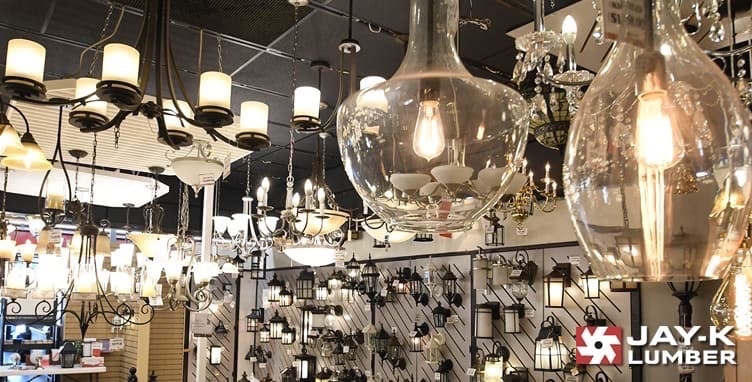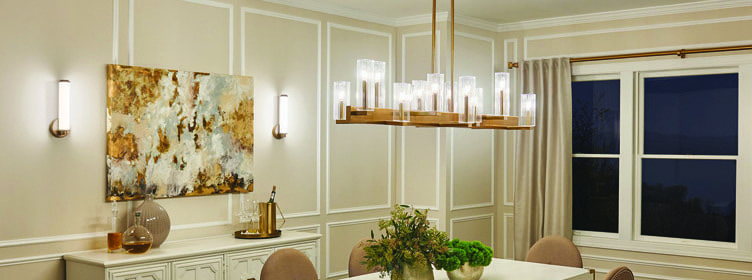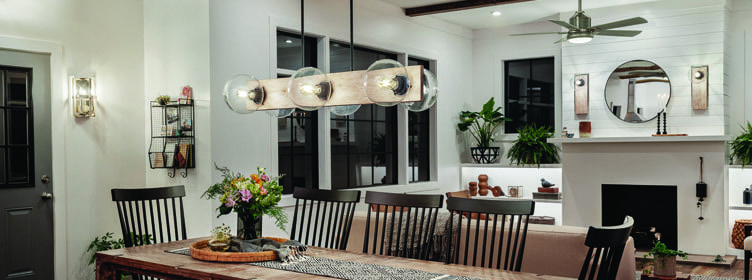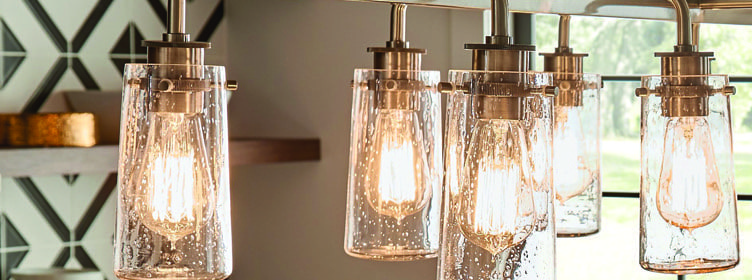How To Find Your Light

Find your light for your home
There is no “one light fits all” solution when it comes to lighting a house. Each space can evoke a certain mood with its own unique style of fixture, light color and quality, and bulb type. And we’re here to help you decide what works best in every area of your home.
Lighting Styles
Every lighting style reflects your design sensibility and the image you want to convey. Some of that style will depend on your tastes, and some is dictated by the mood you want to set for each room. Some more formal, some less so, some for safety, and some for comfort. Here we offer a brief guide to the characteristics of different lighting design styles.
Contemporary
- Clean lines
- Smooth surfaces
- Geometric shapes
- Simple finishes
Modern
- Geometric shapes
- Pure colors
- Large pieces
Industrial
- Dense bronze
- Galvanized steel
- Bare bulbs
Traditional
- Warm finishes
- Deep wood tones
- Inviting patterns

Lighting Categories
Fixture types also affect both the style and mood of your space. There are a number of different categories from which to choose.
- Flush and semi-flush mounts
- Pendants
- Mini pendants
- Chandeliers
- Wall sconces
- Vanity lights
- Outdoor lights
- Under cabinet lights

A Room-By-Room Guide
Every space can be enhanced with the right lighting designs and styles. Here we share some common designers’ preferences for every room.
Bedrooms – Mini chandeliers, pendants, and wall sconces are ideal for more modest spaces. Flush mount ceiling lights can create the illusion of more headroom.
Bathrooms – A light over the mirror and one on each side can surround your face with a flattering glow. Flush mount ceiling fixtures and lighted mirrors lend a clean look without taking up space.
Laundry/Utility Rooms – This is a task-centric room. Think ceiling lights, as well as above-cabinet and under-cabinet LED lighting.
Hallways – Walking down the hall should be a well-lit journey. Look at flush, semi-flush, and recessed ceiling fixtures spaced every 8 to 10 feet. Wall sconces are another nice option, spaced 6 to 9 feet apart.
Closets – If you have a walk-in closet, you’ll want more than one light source. A flush or semi-flush ceiling light is a good focal point. LED lighting is a smart choice for closets, as the bulbs don’t get as hot as incandescent bulbs.
Kitchens – A kitchen often contains a work area, eating area, and entertaining area. Functional lighting and welcoming environments are key. For something unique, try a linear chandelier over a kitchen island. Pendants have a wonderful versatility. Whether you’re illuminating an island or a corner spot, pendants can serve as accent lighting or task lighting to help you get the job done. Under-cabinet lighting can serve multiple purposes: as a night light, as a bright light that accents your flooring and your cabinets, and as late-night lighting.
Living Rooms – Looking to step up your living room design? Add semi-flush ceiling lights, matching wall lights, or a striking chandelier or pendant as a focal point.

Benefits of LED Fixtures and Bulbs
The type of bulb you choose will affect your mood, convenience, energy consumption, and even your health. Some lights meet multiple goals. The newest bulbs are LED (light emitting diode) style, and have many benefits.
1. Money Saving
- Today’s LED bulbs can be 60-70 percent more energy efficient than conventional incandescent lights, and cut energy by up to 70 percent.
- On average, a homeowner will save $75 per bulb over the lifetime of an Energy Star LED bulb versus a traditional incandescent.
2. Versatile
- LEDs are used in a wide range of applications because of their unique characteristics, which include compact size, ease of maintenance, resistance to breakage, and the ability to focus the light in a single direction instead of spreading out in many directions.
3. Durable
- There is a no filament than can be broken, reducing the chance of breakage before use.
4. Instant-On
- Unlike compact fluorescent light bulbs (CFLs), LEDs will turn on to their stated light output immediately; no waiting for the bulb to reach full illumination.
5. Environmentally Smart
- LEDs contain no mercury (like CFLs) and have a much smaller environmental impact.
- LEDs are UV-Free. UV emissions are suspected to be harmful to health after prolonged exposure.
6. Temperature
- Incandescent bulbs release 90 percent of their energy as infrared radiation, making them hot to touch. While CFLs release 80 percent of their energy, a high quality LED produces no infrared radiation, keeping them typically cool to the touch. With little wasted energy, LEDs ultimately save homeowners on long-term energy costs.
- LEDs are available in warm white, cool white, and daylight color temperatures.
Enhance your home life by choosing the perfect styles, fixtures, and bulbs for your next project. Get started today by visiting our Lighting Department page, then stopping by our lighting cloud for an expert consultation, or ask one of our experts a question now.
Explore more of our Tips & Ideas
